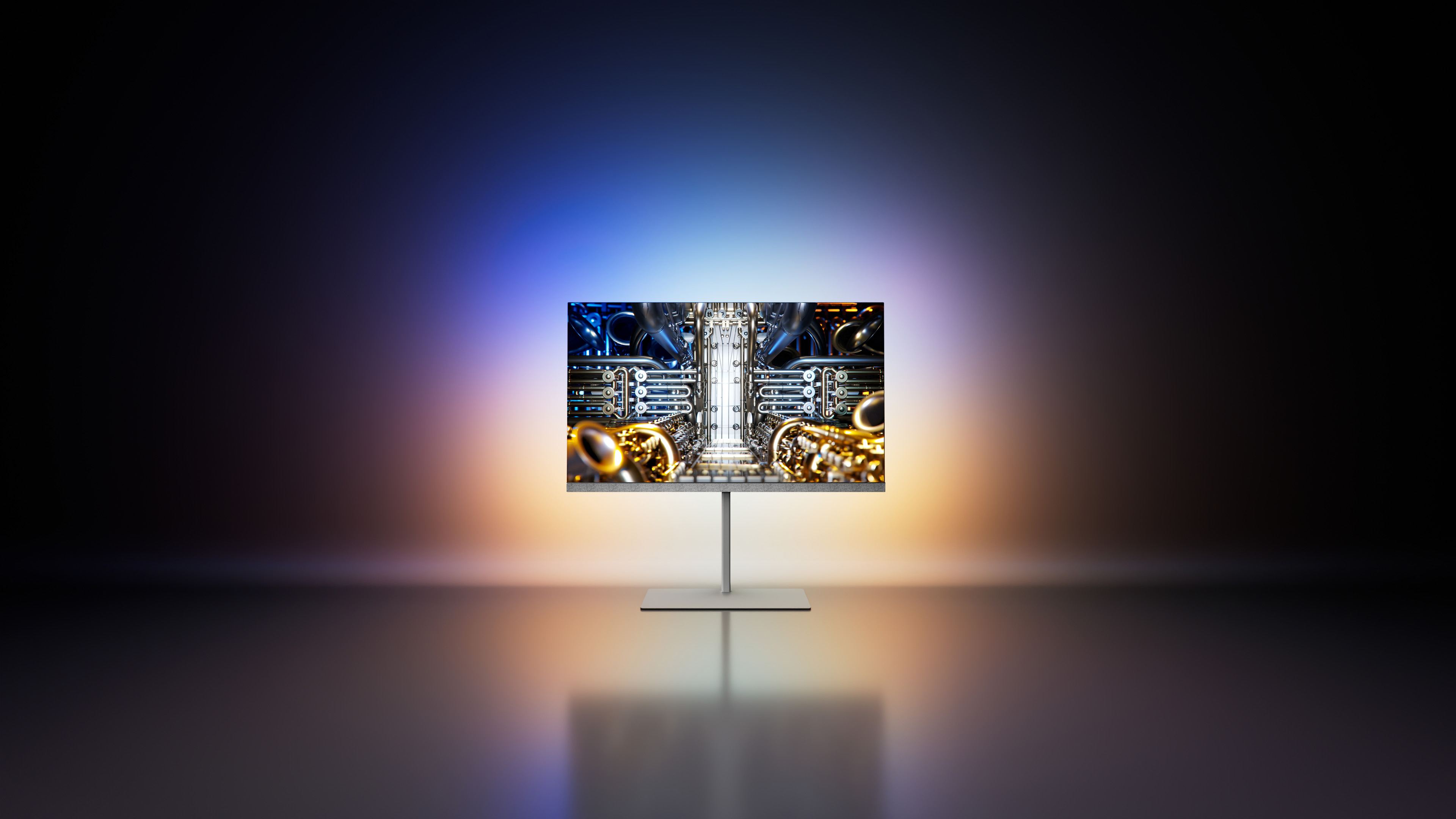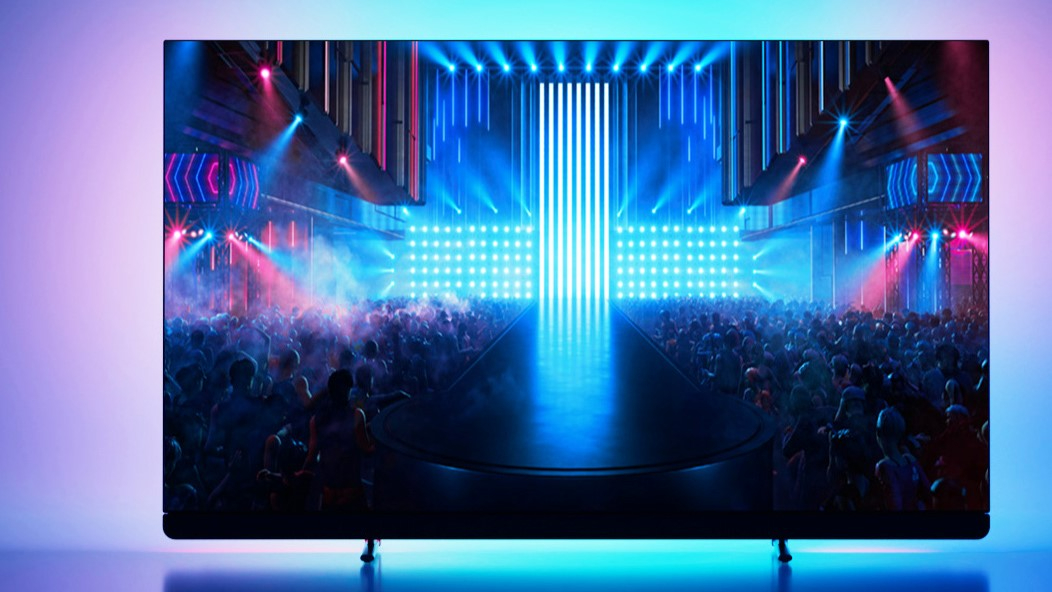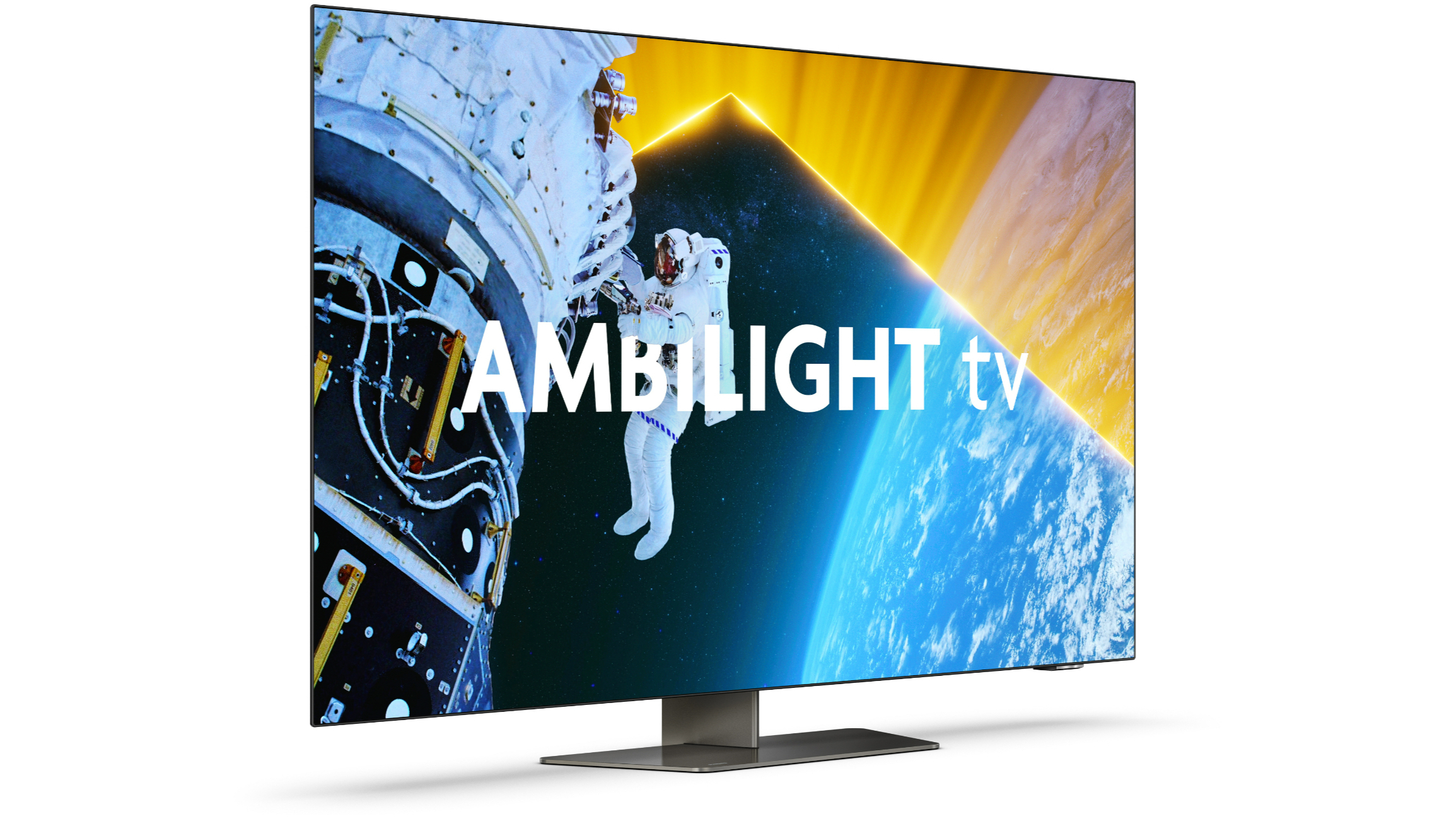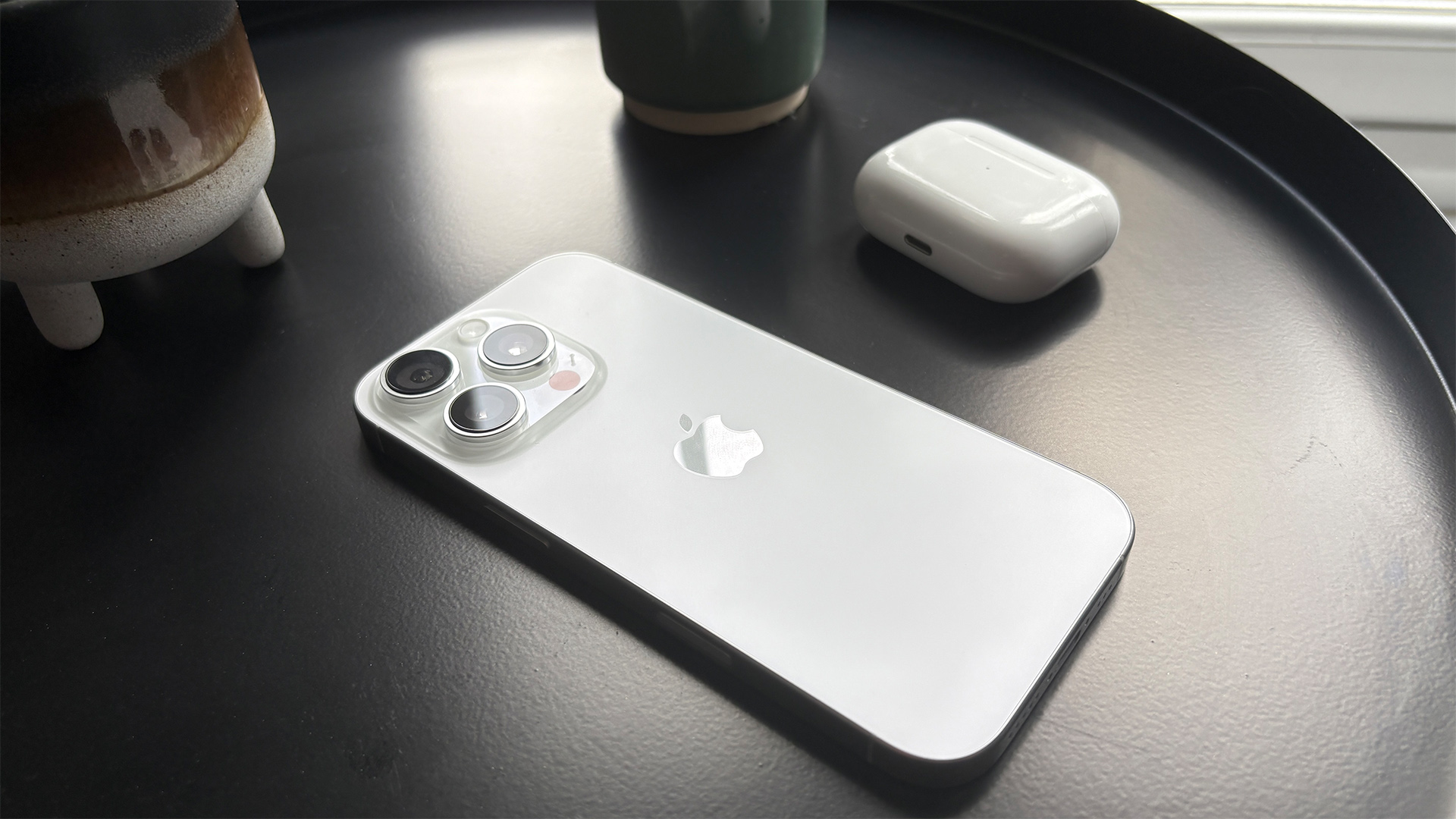Philips's new OLED TVs feature 3000-nit MLA tech, upgraded Ambilight and B&W sound
Plus core OLED809 model, ‘Xtra’ Mini LED set and ‘The One’

Having taken its traditional swerve of CES, Philips has just taken the wraps off its 2024 range at a dedicated event in Barcelona. The big news is that there are new ‘OLED+’ models on the way. These are extra-fancy models with Philips’s best picture technology and B&W sound – and the company didn’t release any such models in 2023.
But there’s a new ‘core’ OLED model in the form of the OLED809, too, plus the Mini LED-backlit ‘Xtra’ and standard LCD model, ‘The One’.
First up, though, is the flagship OLED+959. This is immediately reminiscent of the old OLED+986, thanks to the fact that both sets come with a floor stand. But, unlike the OLED+986, the new OLED+959’s speaker bar is slim and integrated into the TV’s main chassis, rather than a large, distinct unit that is separate from the main TV section.
Just because the sound system is more discreet this time, doesn’t mean it’s low-spec. On the contrary, this is still a B&W-produced setup with 5.1.2 channels and a claimed 102W of power.

The OLED+959 also features a new version of the Ambilight ambient lighting system. Called Ambilight Plus, it involves multiple lenses that have been mounted to the LEDs that are dotted around the sides of the set’s rear, says Philips. This apparently results in a "more dynamic, larger overall halo with more resolution". Philips also says it "can project up to four different halos at different depths to add a new two-dimensional impact." Sounds intriguing.
There is big news on the picture quality front, too, in that the OLED+959 features the new second-generation MLA OLED panel from LG Display. While some manufacturers are being coy about the brightness figures they expect their new OLEDs to hit, Philips is openly stating that this new panel, in conjunction with the ‘META 2.0 Multi Booster algorithm’, can hit up to 3000 nits of brightness.
Under the hood is the new ‘8th Gen P5 AI Dual Engine’ processor, which brings with it three main new/upgraded features: ‘Ambient Intelligence V3’, which apparently specifically optimises HDR to ambient light levels, seemingly to ensure you still get plenty of HDR pop in a bright room; ‘AI Machine Sharpness V2’, which is designed to make the image more crisp and detailed; and ‘Smart Bit Enhancement V3’, which Philips says solves banding in low-quality content.
Get the What Hi-Fi? Newsletter
The latest hi-fi, home cinema and tech news, reviews, buying advice and deals, direct to your inbox.
On the gaming front, we understand there are still just two HDMI 2.1 sockets (we have requested official confirmation), but the OLED+959 does support 144Hz signals, even with Dolby Vision. There is a big question mark over how useful that is (144Hz gaming is available only via very high-end gaming PCs and there’s no 144Hz Dolby Vision source available yet), but it does at least show bold intention from Philips. VRR and ALLM are of course supported, too, as well as the 4K/120Hz format that PS5 and Xbox Series X gamers will actually appreciate; and the OLED+959 also features a new Game Bar for quick, game-specific picture customisations and signal information.
The OLED+959 is set to be released only in a 65-inch size model, although we will check with Philips to see if it plans on releasing any more screen size options in the future.
OLED+909

For those who want the second-gen MLA tech of the OLED+959 but can live with a few slight downgrades elsewhere, the step-down OLED+909 looks like the way to go. As with the flagship model, the OLED+909 will hit a claimed 3000 nits of brightness, and it has the same gaming specification and features.
The sound system is still by B&W, but this time it’s a 3.1-channel affair with a claimed 81W of power. The drivers are housed in a very slim, Kvadrat-covered bar attached to the bottom lip of the TV, and rather than a floor stand, the TV comes with dainty feet. All in all, it’s a very minimalist-looking set.
The OLED+909 doesn’t get the Ambilight Plus system of the OLED+959, but it does mark the return of four-sided Ambilight, which was absent from all of Philips’s 2023 models. This means that the Ambilight glow will emerge from the bottom of the set as well as the top and sides, theoretically making for a lovely spectacle, particularly if the TV is wall mounted.
Running the show is the 8th Gen P5 AI processor, seemingly without the OLED+959’s ‘Dual Engine’ bit. It does support the new Ambient Intelligence V3 feature but, as far as we can tell, not Ambient Intelligence V3 or AI Machine Sharpness V2.
The OLED+909 will be available in June in 55-, 65- and 77-inch sizes.
OLED809

Despite having arrived on UK shores only around October last year, the OLED808 already has a successor in the form of the OLED809. This is Philips’s core OLED model for 2024 and is destined to do battle with the LG C4.
Predictably, it does without MLA tech, but Philips says that it does feature a new, ‘higher output’ OLED EX panel that can hit a peak brightness figure of 1300 nits. Processing comes courtesy of the same 8th Gen P5 AI chip as is in the OLED+909, and the OLED809 supports all of the same gaming features as its more premium siblings.
As is the norm for its 800-series OLEDs, the OLED809 features a sound system by Philips itself. This is a 2.1-channel system that is rated to a claimed 50W for the 42-inch model and 70W for all of the other sizes. All models feature three-sided Ambilight.
The OLED809 will be available in May in 42-, 48-, 55-, 65- and 77-inch sizes. No pricing for any of the new models has been announced.
MORE:
Read our hands-on review of the Philips OLED+908
As well as our full Philips OLED808 review
And our picks for the best OLED TVs
Tom Parsons has been writing about TV, AV and hi-fi products (not to mention plenty of other 'gadgets' and even cars) for over 15 years. He began his career as What Hi-Fi?'s Staff Writer and is now the TV and AV Editor. In between, he worked as Reviews Editor and then Deputy Editor at Stuff, and over the years has had his work featured in publications such as T3, The Telegraph and Louder. He's also appeared on BBC News, BBC World Service, BBC Radio 4 and Sky Swipe. In his spare time Tom is a runner and gamer.

